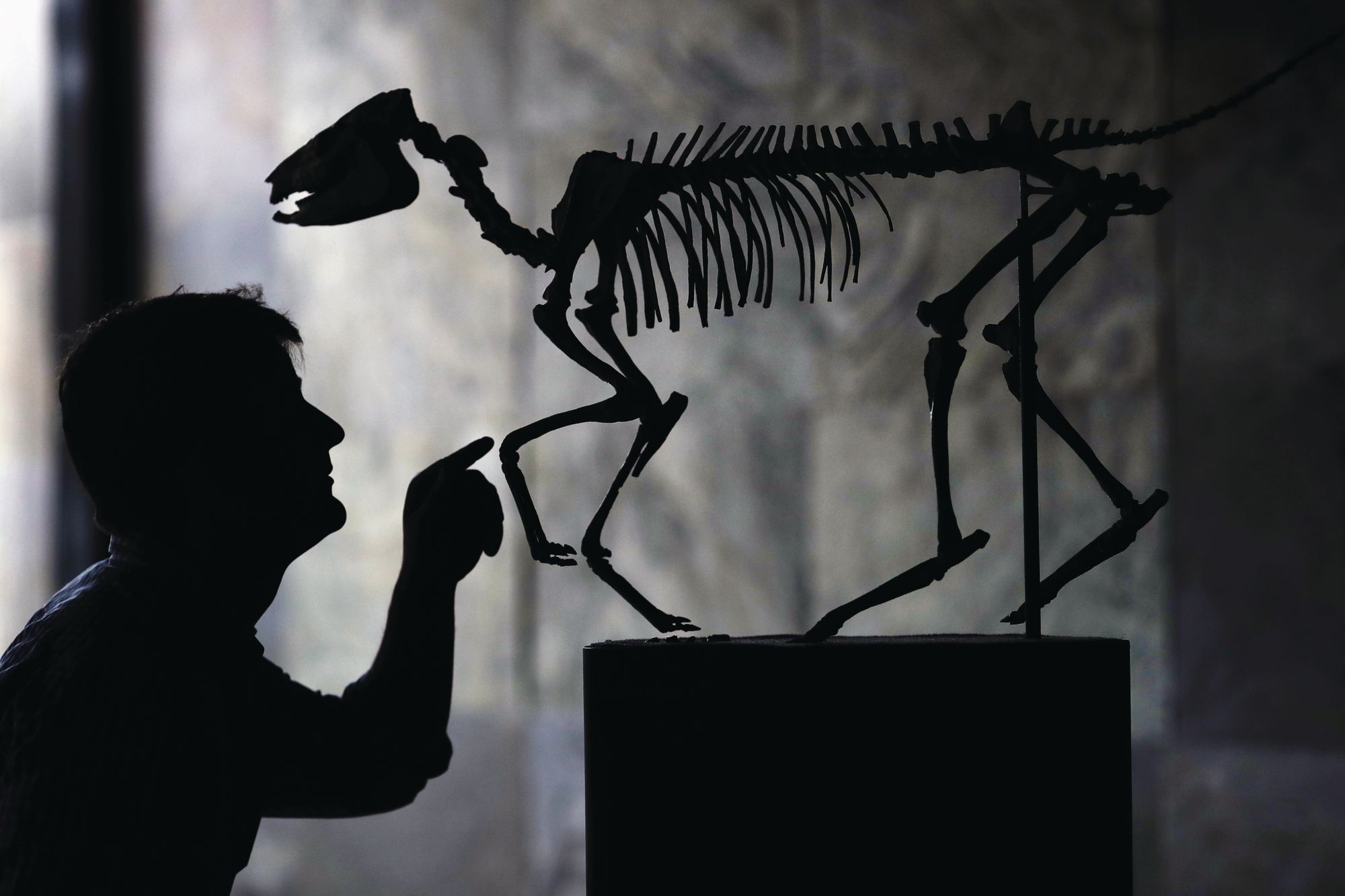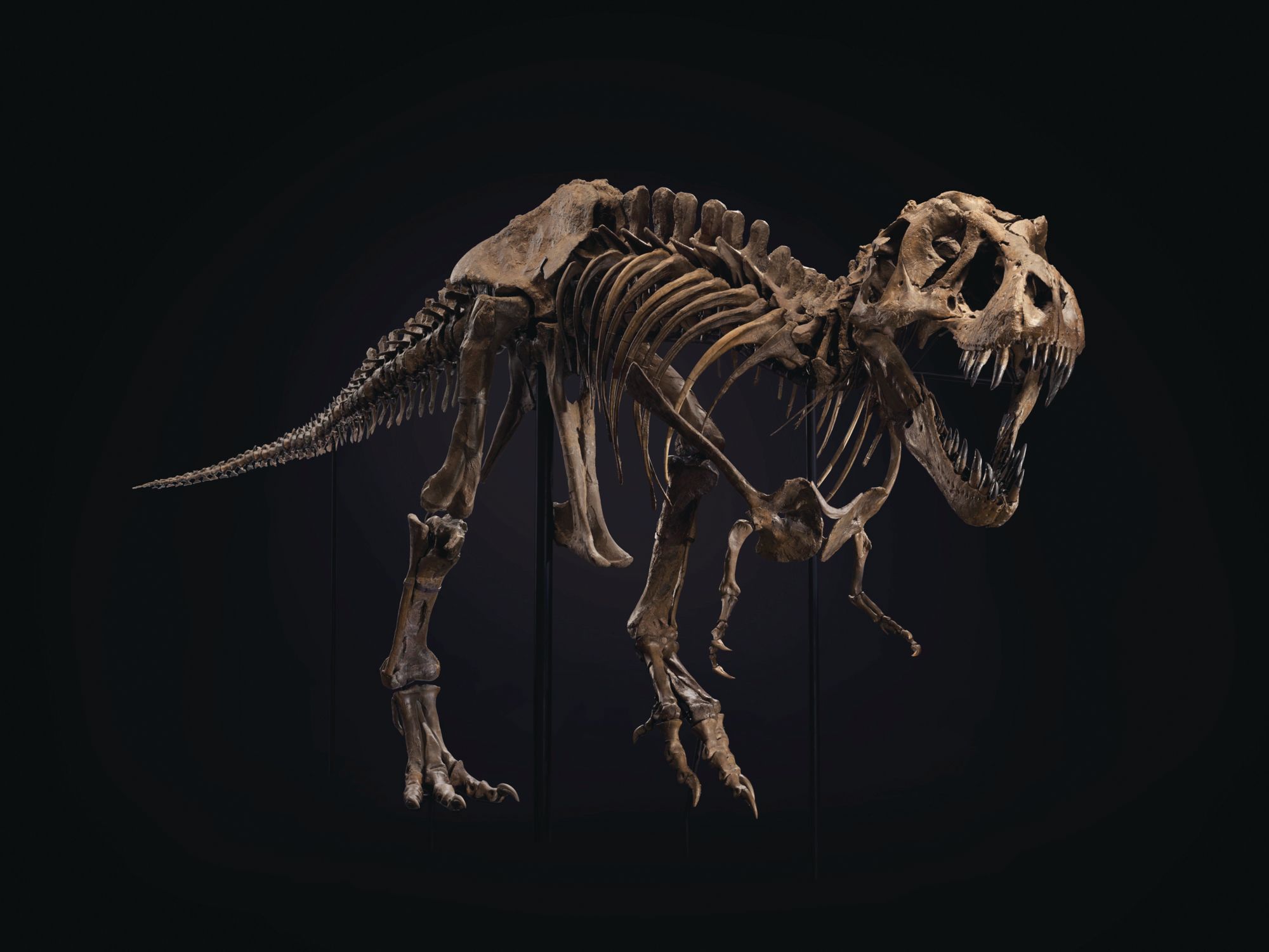The market for dinosaur fossils is booming, thanks in part to a new generation of mysterious, moneyed collectors from Asia
On a quiet, leafy road in Singapore’s upscale Upper Thomson district sits what appears to be a conventional family home. But anyone who steps through the front door is in for a shock—it’s like stumbling into Jurassic Park.
“I have more than 1,000 fossils in my collection,” says Calvin Chu, a partner at consulting firm Eden Strategy Institute. An enormous skull of a prognathodon giganteus—a 10-metre-long, prehistoric marine reptile that looks like a cross between a whale and a crocodile—sits next to his dining table. Rows of custom-built cabinets house artefacts that include the tooth of a tyrannosaurus rex and a 4.4 billion-year-old rock, one of the world’s oldest.
“Some collectors are proud of ‘taming’ a prehistoric beast that sits on their mantle,” says Chu. “But for myself, standing at the foot of a giant dinosaur or a ferocious ancient predator humbles me, and gives me perspective on how trivial the day-to-day issues we may be dealing with might be. I guess when astronomers contend with the vastness of space, it is a very similar feeling of smallness.”
See also: Provenance Art Gallery Presents Limited Edition Andres Barrioquinto Prints

Crazy Rich Collectors
Chu is not alone in his obsession with dinosaurs. Interest in collecting fossils is booming, with prices rising astronomically as buyers vie for the top specimens at auctions and in galleries. Fossil fanatics Nicolas Cage and Leonardo DiCaprio have both made headlines with their purchases, but many of the new crop of big-spending collectors are based in Asia: secretive connoisseurs from China, Hong Kong, Taiwan, Thailand, Singapore, Indonesia and the Philippines have collectively spent tens of millions of US dollars on fossils over the past decade.
Their purchases would not be out of place in Crazy Rich Asians: one collector in Singapore has a woolly mammoth tusk taking pride of place in his living room; a devotee in Hong Kong is rumoured to own a pterodactyl; and an enthusiast in Taiwan has an enormous skeleton of a duck-billed prosaurolophus, which at 11 metres long is the length of roughly two cars, to give just a few examples.
An even larger fossil raised eyebrows—and a ruckus—in October, when a bidder at Christie’s paid US$32 million, including fees, for a 67-million-year-old T rex, shattering previous records. Dubbed Stan, the dinosaur stands nearly four metres tall and measures more than 12 metres from nose to tail. It is one of the most complete T rex skeletons ever found, and so has been reproduced dozens of times: casts of Stan sit in institutions such as the National Museum of Natural History in Washington DC and the National Museum of Natural Science in Tokyo, among many others, making it the most widely exhibited dinosaur of all time. At the time of writing, Stan’s new owner remains anonymous, so where in the world the skeleton will end up is unknown.
Unlike Chu, who began collecting as a child, many enthusiasts fall into the world of fossils through their interest in art or other collectibles. “Collectors who are bored of buying yet another bottle of wine, watch or supercar are finding fossils an interesting alternative,” says Chu.
Christie’s auctioned Stan in a sale of 20th-century paintings and sculptures rather than in a dedicated natural history auction. It was the only fossil in a line-up of 46 lots, among them a watercolour by Cézanne, a moody, maroon Rothko and multiple Picassos.




